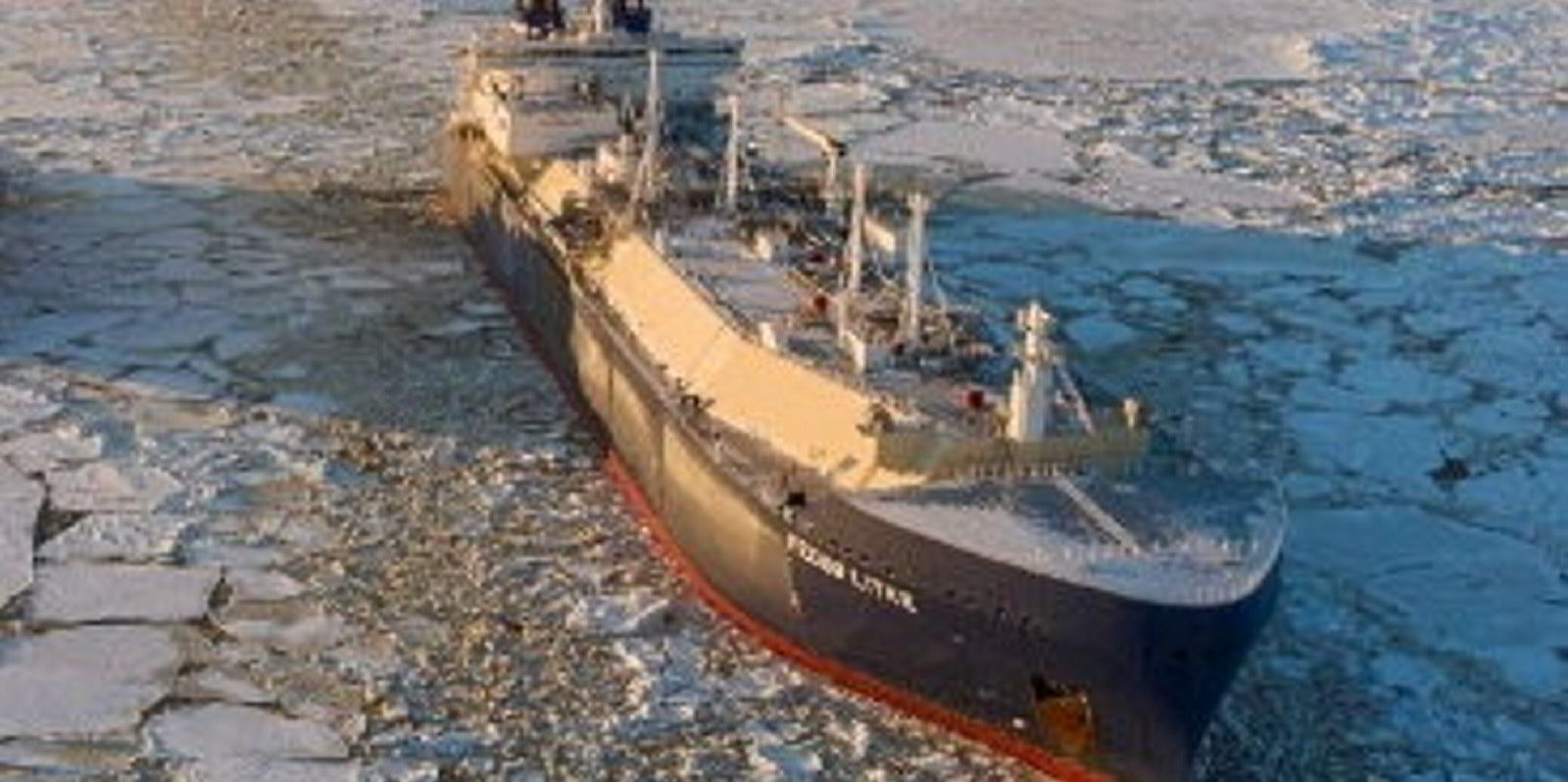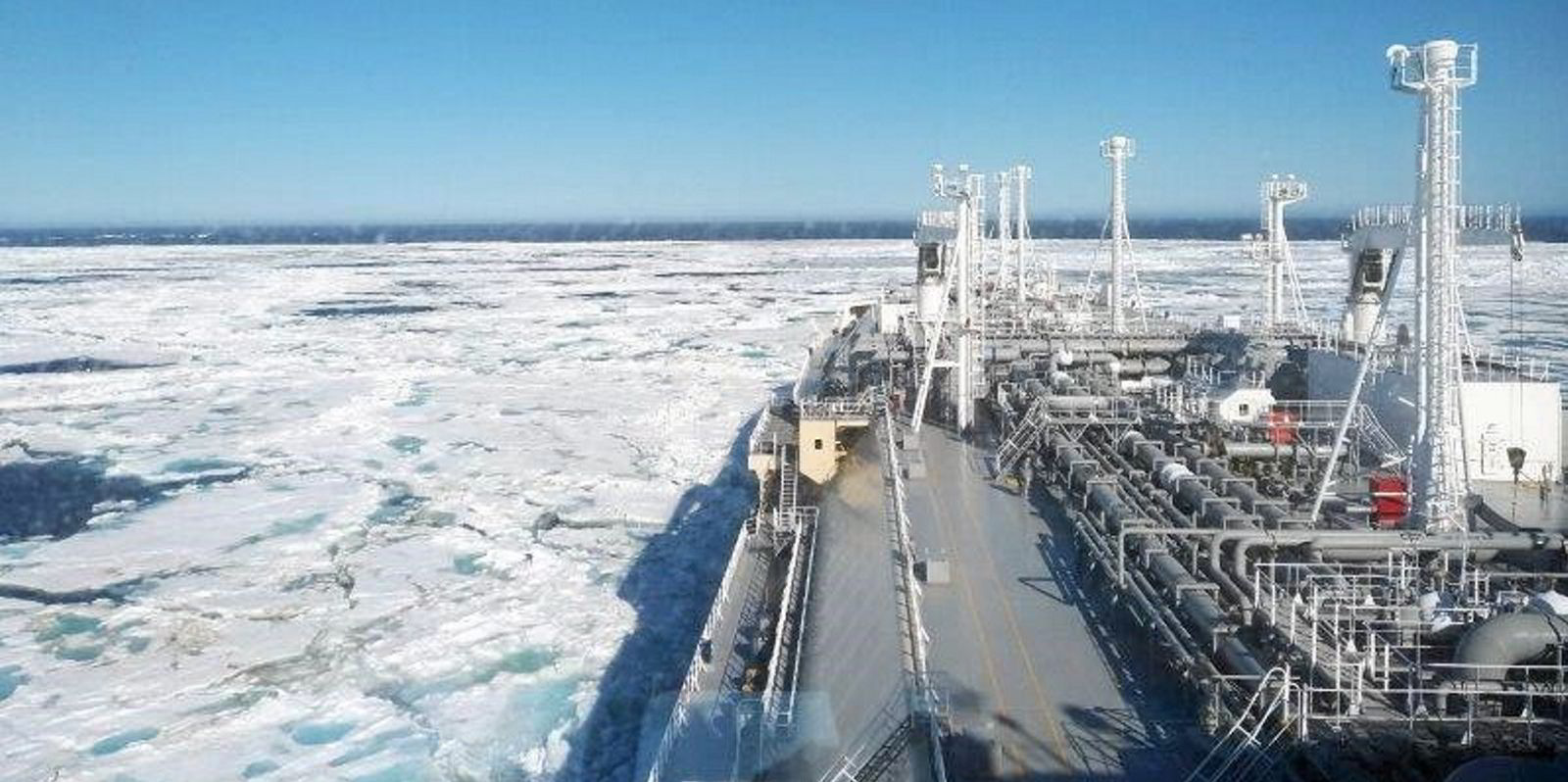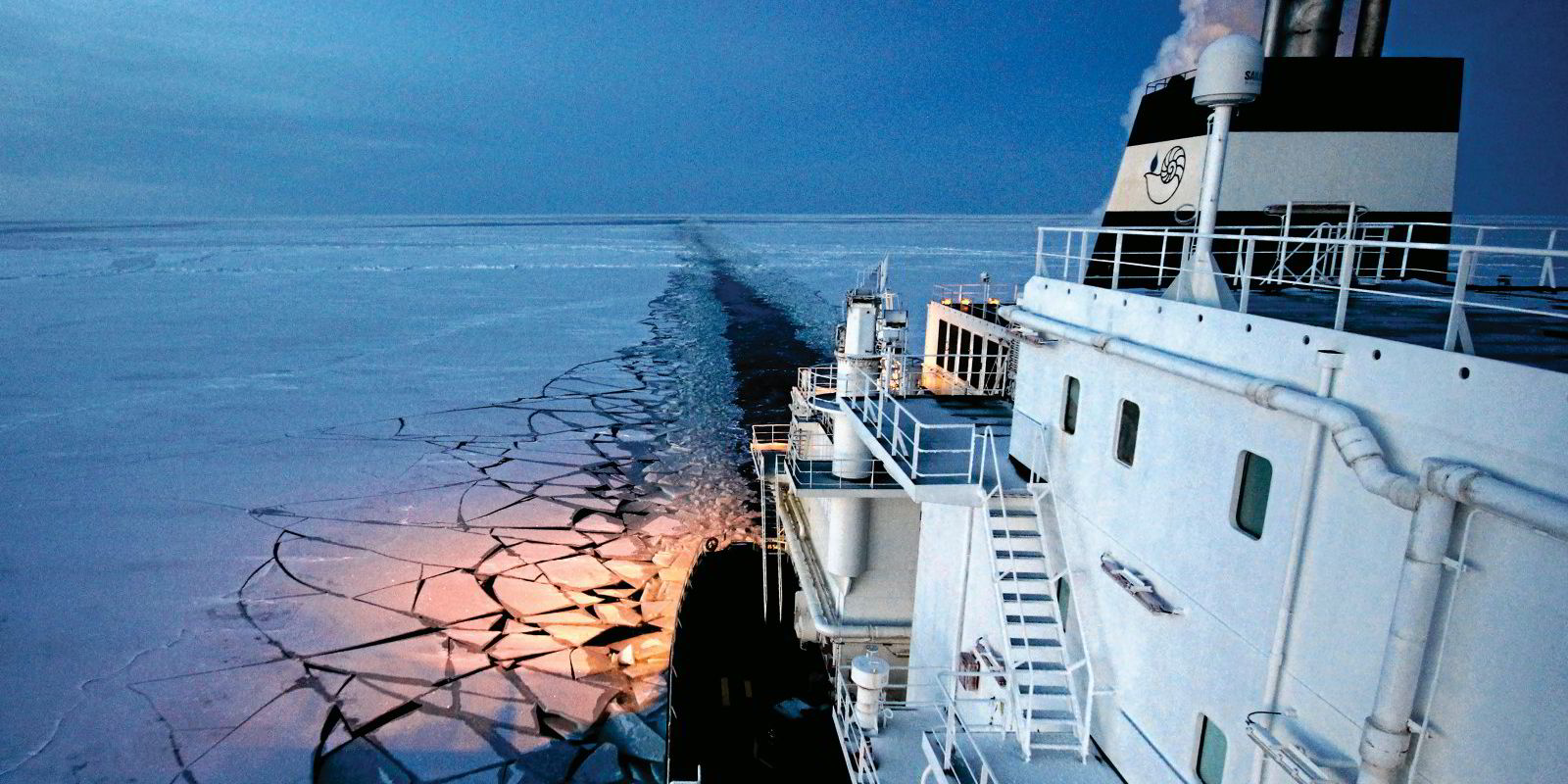A laden LNG carrier has started an eastbound voyage through the Northern Sea Route (NSR) as Russia starts its summer sailings to Asia for 2023 through the Arctic passage.
Eikland Energy’s iGIS/LNG told TradeWinds the 172,600-cbm Arc7 LNG carrier Fedor Litke (built 2017) is heading east led by Rosatom-controlled Atomflot FSUE’s lead nuclear-powered ice breaker Arktika (built 2020).
Fedor Litke loaded a cargo at the Sabetta terminal at Novatek’s Yamal LNG plant at the weekend leaving the plant on 4 June.
The vessel is the first LNG carrier to move eastbound through the NSR since the passageway closed for the winter due to ice cover several months earlier.
It marks the start of summer sailings for the specialised ice-breaking Arc7 LNG carrier fleet which are able to take the shorter route to Asia with their cargoes even with some sea ice cover.
Watchers of the NSR said they are surprised that Novatek has not attempted a voyage east earlier as ice conditions have been looking good for the past two weeks.
One pointed to the ice-breakers Ural and Yamal which are currently stationed to the east of the Yamal Peninsula suggesting they might be lined up to escort other vessels.
In 2022 an LNG carrier also made a first eastbound laden voyage in June. But Russia has sent vessels earlier in previous years.
In January 2023 the 172,600-cbm Boris Vilkitsky (built 2017) completed the return leg of a round trip voyage from Yamal LNG to China in tough ice conditions.
Artika sailed east to meet the Arc7 vessel which is technically capable of breaking 2.1 metre thick ice but appeared to have be struggling in harsh sea ice conditions.
Last year Novatek put an Arc7 ice-class module carrier Audax (built 2016) through the NSR in February after the traditional navigation season closure. The vessel was delivering a process module weighing almost 12,000 tonnes for the Arctic LNG 2 project from Tianjin in China to Murmansk.
Russia wants to open up the NSR for year-round shipping and has been testing the boundaries of when it can open up the route for vessels with earlier voyages. But ice conditions in the period from January through to May remain tough.
In 2022 Russia said some 34 million tonnes of cargo was shipped along the Arctic sea route, almost 1 mt more than in the previous year. Of the total LNG and condensate accounted for the bulk of the shipments or 20.5 mt.






